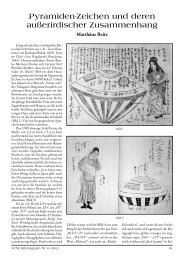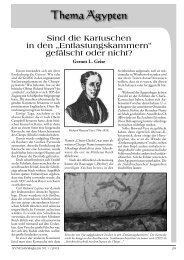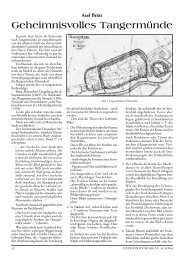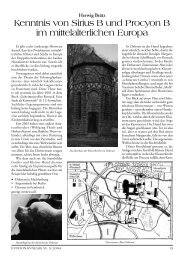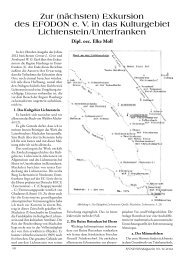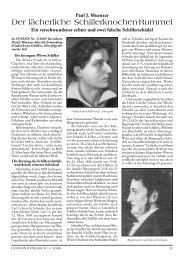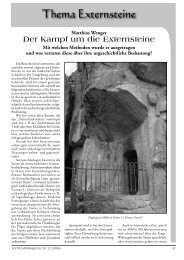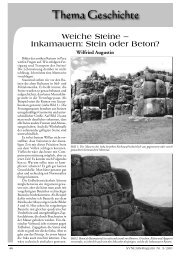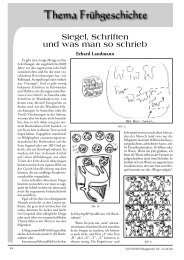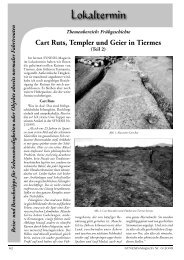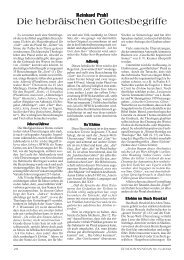Zum Ursprung des Horus-Glaubens im ... - EFODON eV
Zum Ursprung des Horus-Glaubens im ... - EFODON eV
Zum Ursprung des Horus-Glaubens im ... - EFODON eV
Erfolgreiche ePaper selbst erstellen
Machen Sie aus Ihren PDF Publikationen ein blätterbares Flipbook mit unserer einzigartigen Google optimierten e-Paper Software.
Figur 5: Falkenpalette, Ägyptische Sammlung (SAS), München<br />
Die folgende spätere Darstellung zeigt den Doppel-Falken:<br />
Figur 6: Doppel-Falken in vereinfachter Darstellung<br />
Diese vereinfachte 27 Darstellung war sicherlich die Vorstufe für die spätere<br />
Schreibung der sogenannten <strong>Horus</strong>namen 28 <strong>des</strong> Königs. Sie wurde in<br />
einem Schutz-"Serech" geschrieben, 29 mit dem <strong>Horus</strong>falken darüber.<br />
27 Dieser Falke ist aus El-Beda in der Nordost Delta Region. Siehe<br />
.<br />
28 Dr. Zahi Hawass, in "The Falcon God", schreibt: "The name "HORUS" stems from the<br />
ancient Egyptian word hr (her) which in its s<strong>im</strong>ple form was the preposition "above",<br />
"upon" so <strong>Horus</strong> the falcon soars above all the land and its inhabitants, and was, the<br />
natural symbol of the King who reigns over all Egypt....<strong>Horus</strong>, represented by the hawk,<br />
was the god of the Sky, a symbol of divine Kingship, and protector of the ruling King....<br />
<strong>Horus</strong> was the god of the Nile Delta (Lower Egypt) and Seth was the god of Upper<br />
Egypt.... The Kings of the predynastic Egypt were known as the followers of <strong>Horus</strong>...."<br />
.<br />
29 Siehe Königstitel, Das alte Ägypten <br />
11



